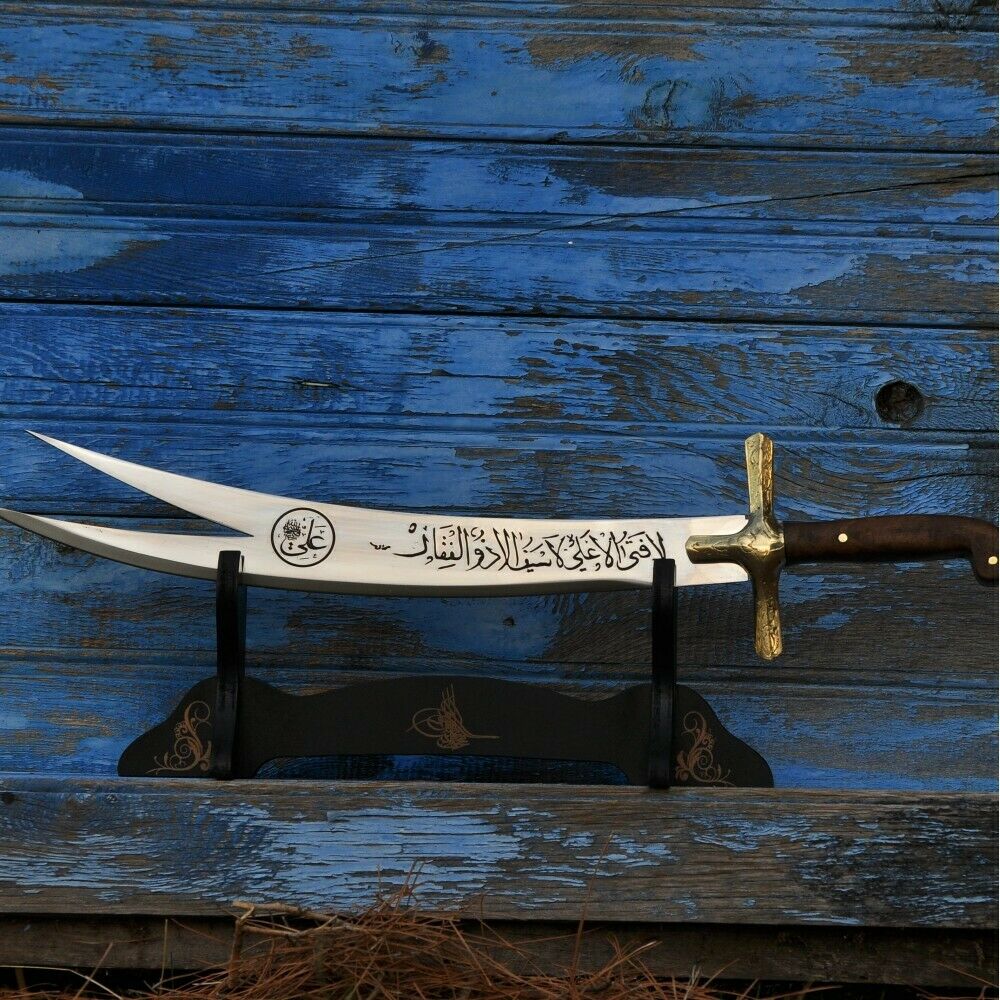
The Zulfiqar Sword, beloved by many for its legendary religious power and influence, is one of the most renowned swords in history. From its prominent place in Islamic lore to its fascinating origin story, this iconic symbol of strength and courage has long captured the imaginations of believers and non-believers alike. Discover the sword's rich history and significance with this comprehensive guide!
1. Where did Zulfiqar Sword come from?
The earliest known use of the Zulfiqar Sword dates back to around 656, during the lifetime of Islamic prophet Muhammad. According to Islamic tradition, Muhammad gave the weapon to his son-in-law and cousin Ali ibn Abi Talib. Records show that Ali used the sword during a battle in present day Iraq, where it was said to have been imbued with special powers. Since then, the Zulfiqar Sword has been wielded by many great leaders and warriors throughout history, particularly those associated with Shia Islam.
Imam Ali was unanimously considered the bravest and the best swordsman in the entire history of Islam. Battle of Badr, Uhud, Kyber or Khandaq — Islamic history has witnessed all the events where the Lion of Allah Hazrat Ali displayed his excellence with his Sword. Ali's fame grew with every battle that he was in due to his courage, valour, and chivalry and the fact that he single-handedly destroyed many of Arabia's most famous and feared warriors. Records of these battles carry with them chronicles of his bravery, courage and chivalry. Even the enemies sang songs of his courage and gallantry.
2. What is the meaning Of Zulfiqar?
Zulfiqar إلا ذوالفقار is an Arabic word that means "the spine splitter". It was the only Sword of that time that had double edges. During one of the battles, the Prophet Muhammad prayed to Allah for help, and that was when Allah sent angel Gabriel towards Muhammad Prophet, who gave him the Zulfiqar sword, then it was given to Imam Ali. At this point, some accounts report following Ali's successful defence that a call from the skies by the Gabriel proclaimed a famous phrase: "There is no hero like Ali; There is no sword like Zulfikar. لا فتى إلا علي لا سيف إلا ذو الفقار (la fata illa ali la saif illa zulfiqar)
3. How Did the Zulfiqar Sword Get Its Symbolic Power?
Over the centuries, the Zulfiqar Sword has been associated with power, strength and courage. Its iconographic usage throughout history has transcended its oppressive physical abilities, to become a potent symbol of religious and spiritual belief. Islamic tradition suggests that Prophet Muhammad himself granted metaphysical powers to the sword – due to his esteemed holy status, these supernatural properties became synonymous with its beloved symbolism. From kings to revolutionaries and freedom fighters alike, Muslim cultures have turned to the Zulfiqar Sword as an emblem of piety, justice and strength ever since.
The Zulfiqar Sword has gained an immense amount of significance for many cultures around the world, including Islamic traditions. Its iconic symbolism and power is widely-recognized in religious contexts, and is often used as a symbolic representation of strength, protection, justice and purity. Today, the Zulfiqar Sword is seen as a symbol of resistance to oppression and injustice; standing up for what’s right even if it means facing danger. As a result, many revolutionaries around the world have taken to using this ancient weapon as part of their movement
4. Did Imam Hussain Fight With Zulfiqar In Karbala?
According to historians, after the death of Hazrat Ali, the Zulfiqar was inherited by Imam Hassan, the older son of Hazrat Ali, and he passed it on to Imam Hussain after his death. In Karbala, Hussain fought with it.
5. Where Can We See Examples of The Zulfiqar Sword in Popular Culture?
Examples of The Zulfiqar Sword can be seen throughout popular culture. One of the most iconic examples is in the James Bond movie, The Man with the Golden Gun (1974). In it, Francisco Scaramanga uses a special version of The Zulfiqar Sword to vanquish his enemies. Additionally, there are many other references to this iconic weapon throughout fictional stories and artwork. For example, the video game Assassin’s Creed III features a mission that refers to The Zulfiqar Sword and its impact on history. Finally, there have been numerous attempts at replicas of this ancient weapon made by collectors and enthusiasts around the world over centuries – pieces that you can find at various museums or online auction sites.
Feel free to share, comment and link this article to your blog or site if it adds value!



2 comments
I bought a silver 925 ring with a red stones with sword on sides just looking at history of the sword very intresting
gbnsgaefgmiopyjgwgfwe
Leave a comment